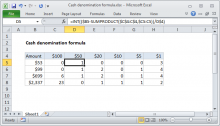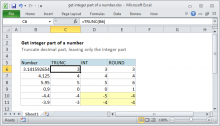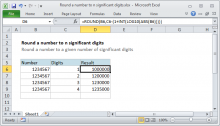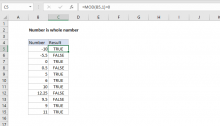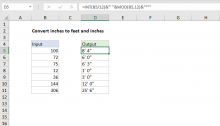What Does Int Stand for in Math
What Does Int Stand for in Math
- Login
- Cart
- Training
- Videos
- Functions
- Formulas
- Shortcuts
- Blog
Excel INT Function
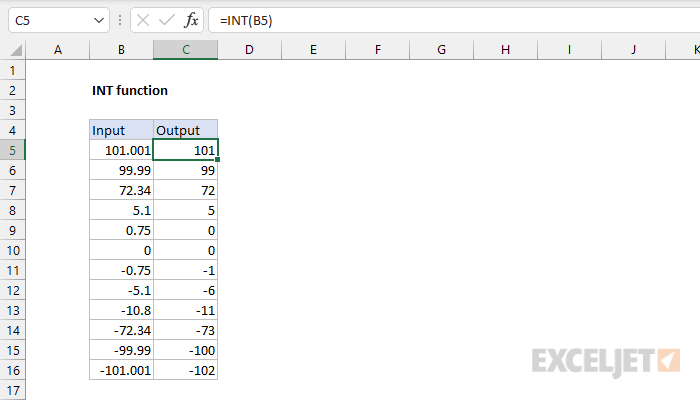
Summary
The Excel INT function returns the integer part of a decimal number by rounding down to the integer. Note that negative numbers become more negative. For example, while INT(10.8) returns 10, INT(-10.8) returns -11.
Purpose
Get the integer part of a number by rounding down
Return value
The integer part of the number after rounding down
Arguments
- number - The number from which you want an integer.
Usage notes
The INT function returns the integer part of a decimal number by rounding down to the integer. It is important to understand that the INT function returns the integer part of a decimal number, after rounding down. One consequence of this behavior is that negative numbers become more negative. For example, while INT(10.8) returns 10, INT(-10.8) returns -11. To return an integer by truncating decimals, see the TRUNC function.
The INT function takes just one argument, number, which should be a numeric value. INT returns a #VALUE! error if number is not a numeric value. If number is already a whole number, INT has no effect.
Examples
When numbers are positive, the INT function rounds down to the next lowest whole number:
= INT ( 3.25 ) // returns 3 = INT ( 3.99 ) // returns 3 = INT ( 3.01 ) // returns 3
Notice INT rounds positive numbers down toward zero. With negative numbers, INT rounds down away from zero:
= INT ( - 3.25 ) // returns -4 = INT ( - 3.99 ) // returns -4 = INT ( - 3.01 ) // returns -4
INT vs. TRUNC
INT is similar to the TRUNC function because they both can return the integer part of a number. However, TRUNC simply truncates a number, while INT actually rounds a number down to an integer. With positive numbers, and when TRUNC is using the default of 0 for num_digits, both functions return the same results. With negative numbers, the results can be different. INT(-3.1) returns -4, because INT rounds down to the lower integer. TRUNC(-3.1) returns -3. If you simply want the integer part of a number, you should use TRUNC.
Rounding functions in Excel
Excel provides a number of functions for rounding:
- To round normally, use the ROUND function.
- To round to the nearest multiple, use the MROUND function.
- To round down to the nearest specified place, use the ROUNDDOWN function.
- To round down to the nearest specified multiple, use the FLOOR function.
- To round up to the nearest specified place, use the ROUNDUP function.
- To round up to the nearest specified multiple, use the CEILING function.
- To round down and return an integer only, use the INT function.
- To truncate decimal places, use the TRUNC function.
Notes
- INT returns a #VALUE! error if number is not a numeric value.
- Use the INT function to get an integer from a number by rounding.
- Use the TRUNC function to return an integer by truncating.
Related functions

The Excel TRUNC function returns a truncated number based on an (optional) number of digits. For example, TRUNC(4.9) will return 4, and TRUNC(-3.5) will return -3. The TRUNC function does no rounding, it simply truncates as specified.
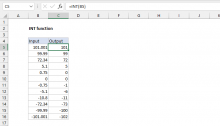
The Excel INT function returns the integer part of a decimal number by rounding down to the integer. Note that negative numbers become more negative. For example, while INT(10.8) returns 10, INT(-10.8) returns -11.
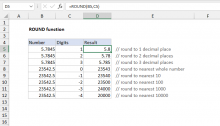
The Excel ROUND function returns a number rounded to a given number of digits. The ROUND function can round to the right or left of the decimal point.
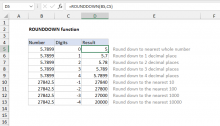
The Excel ROUNDDOWN function returns a number rounded down to a given number of places. Unlike standard rounding, where only numbers less than 5 are rounded down, ROUNDDOWN rounds all numbers down.
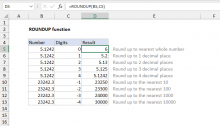
The Excel ROUNDUP function returns a number rounded up to a given number of decimal places. Unlike standard rounding, where only numbers less than 5 are rounded down, ROUNDUP rounds all numbers up.
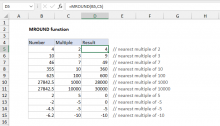
The Excel MROUND function returns a number rounded to a given multiple. MROUND will round a number up or down, depending on the nearest multiple.

The Excel FLOOR function rounds a given number down to the nearest specified multiple. FLOOR works like the MROUND function, but FLOOR always rounds down.
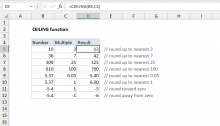
The Excel CEILING function rounds a given number up to the nearest specified multiple. CEILING works like the MROUND function, but CEILING always rounds up.
Download 100+ Important Excel Functions
Get over 100 Excel Functions you should know in one handy PDF.
Excel video training
Quick, clean, and to the point.
Learn more
Source: https://exceljet.net/excel-functions/excel-int-function
Posted by: scherkseptan.blogspot.com



